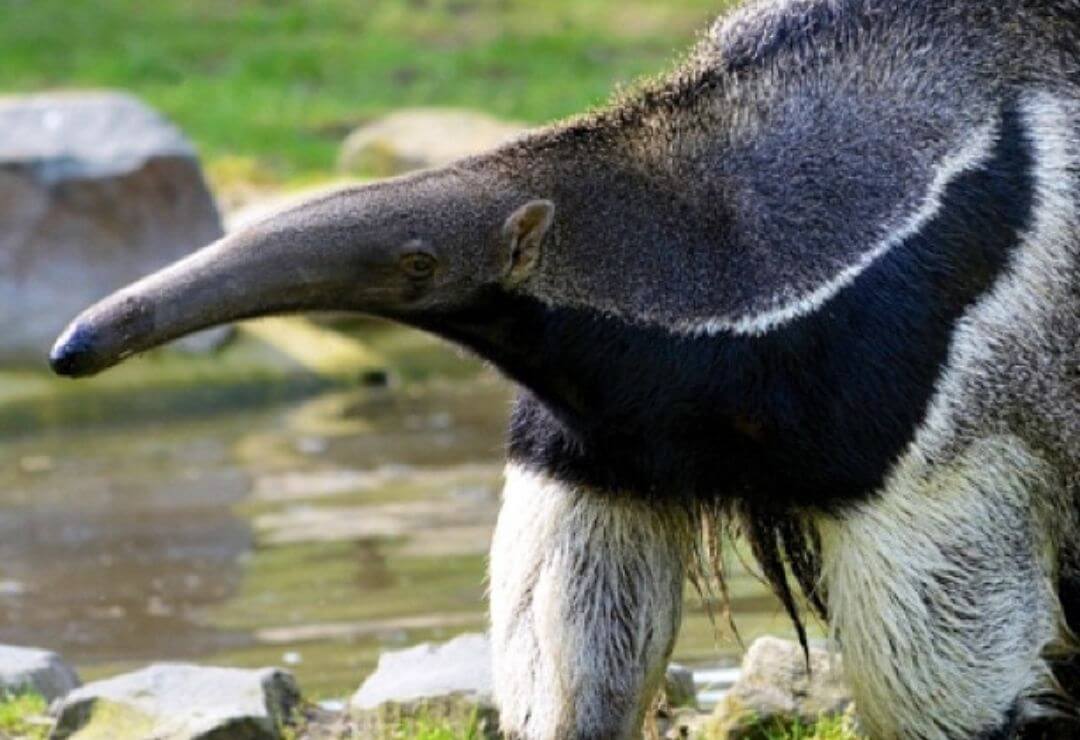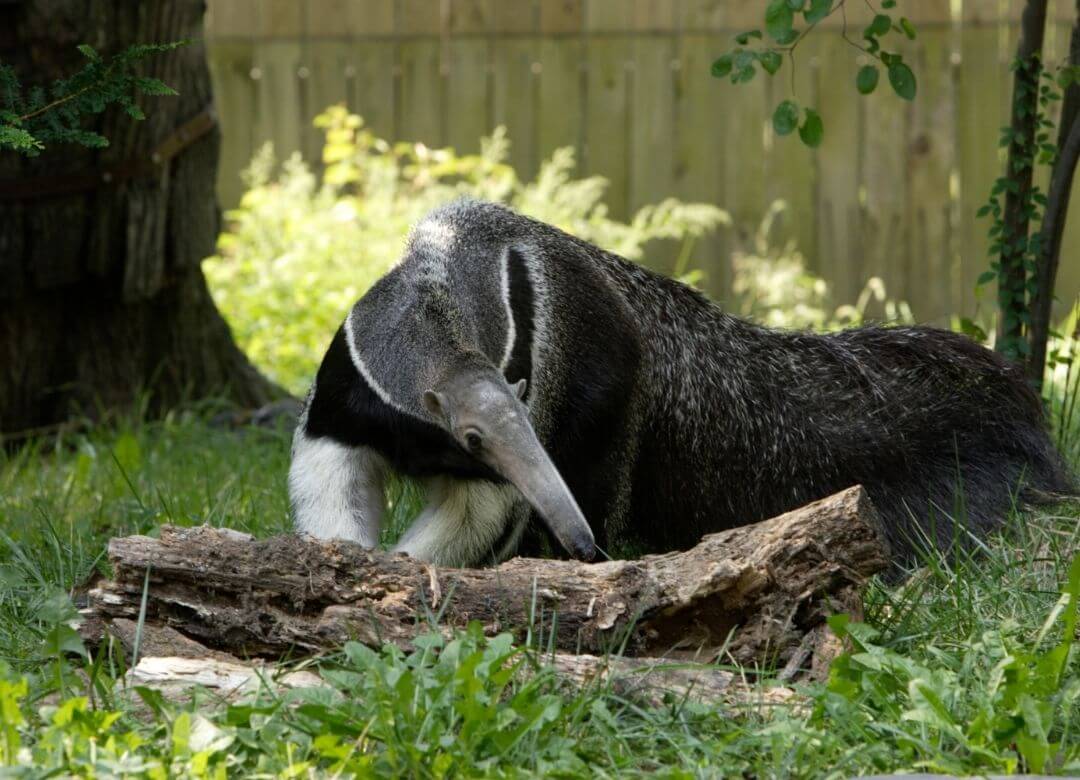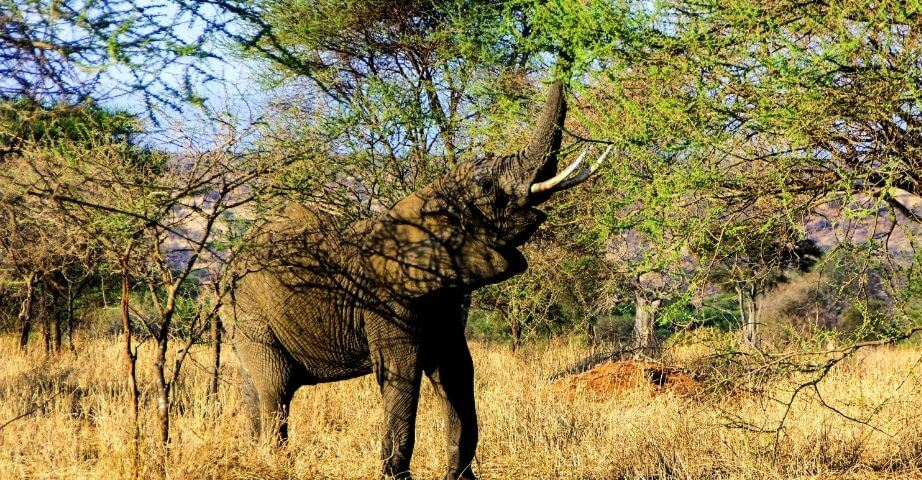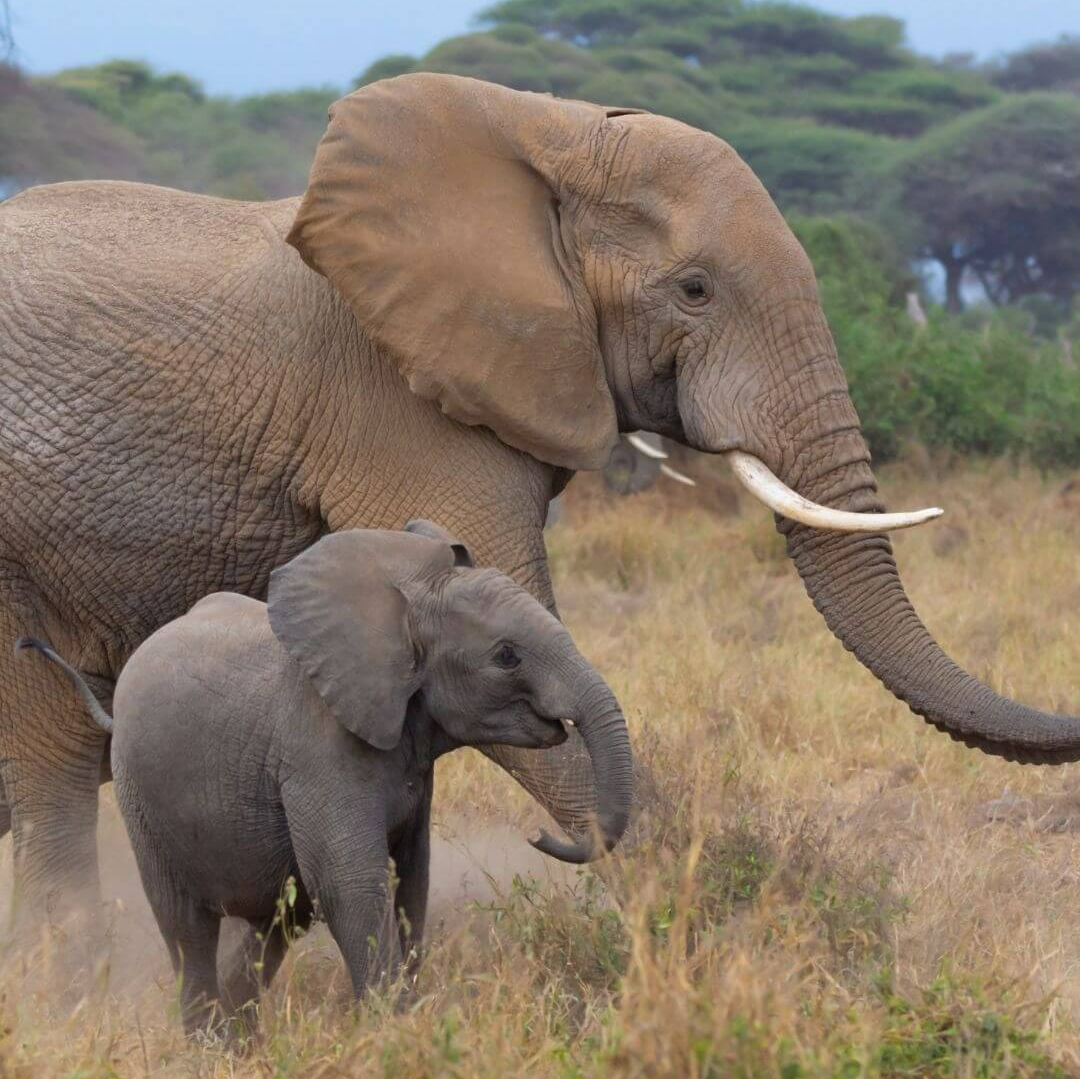Finding and Catching Food
Adaptations

How Do Animals Get Their Food?
Word of the Week
Scavenger
A scavenger is an animal that eats animals that are already dead. Vultures and hyenas are well-known scavengers. Some animals are both hunters and scavengers, like sharks and crocodiles!
Scavengers are very important in their ecosystem because they are the "clean-up crew." They keep the environment clean and prevent the spread of disease.
Species Spotlight
Giant Anteater
Myrmecophaga tridactyla
In the grasslands, wetlands, and wooded areas of Central and South America, giant anteaters search for tiny ants and termites. Anteaters have a specialized tongue that is long and thin (like spaghetti), 2-ft long, and covered in sticky saliva. They do not have teeth, so their tongues scoop up the ants and termites and their vacuum-like throat slurps them in. They can flick their tongues into termite mounds and anthills at a rate of 3 times per second, allowing them to eat more than 30,000 insects in a single day! They seek out bugs using their impressive sense of smell; scientists estimate they can smell 40 times better than humans.
Giant anteaters are also known for their unusual appearance. They grow to be about the size of a golden retriever, but their hair makes them look much larger. Their hair grows long on their tails and can be used as a blanket on cold nights. You may notice that giant anteaters walk on their knuckles. This is to protect their 3-inch long claws that can rip into termite mounds as hard as cement! While we don’t often picture anteaters as powerful predators, their incredible adaptations allow them to make easy prey out of ants and termites.
BRAIN BLAST
Giant anteaters use their sticky tongue to pick up roughly 30,000 ants each day. With this information, practice your math skills to determine how many ants an anteater is eating in...
- 1 week
- 1 month
- 1 year
Conservation Corner
Protecting the Prey Base
Every animal has a job in its ecosystem; we call these jobs ecosystem services. Whether it is a prairie dog creating burrows for other species or a bird spreading seeds to keep the forest healthy, all ecosystem services are important! One service that gets overlooked is the role of being a prey species. We often work to protect large, well-known predators like lions and tigers, but to protect them, we must protect the animals they eat! To protect tigers, we must also protect the deer they eat. To protect deer, we need to create open landscapes and stop cattle and other livestock from overgrazing the plants. To protect sharks, we must protect the fish they eat by not overfishing. To protect hawks and eagles, we must protect rabbits, mice, and other small animals! By protecting the prey species, we protect the high-profile species through a domino effect.
Obtaining Food
Determine if the statements below are true or false by clicking the correct button.
Finding Food Challenge
Elephants are some of the most intelligent and well-traveled animals in the world. For this challenge, you are going to be contributing to a story about elephants by adding your own twist! The stories below need some finishing touches and you are going to be the ones finishing them by choosing words to fill in each of the phrases. Click below to check it out!
Glossary
Adaptation
Things organisms have or do that help them to survive in their environment.
Ambush Predator
A carnivore who catches their food by sneaking up on them.
Behavioral Adaptation
Things organisms do or ways they act that help them survive.
Camouflage
The ability for an organism to blend into their surroundings usually to hide from prey or predators.
Carnivore
An animal that eats other animals.
Energy
The ability to do work or cause change.
Herbivore
An animal that eats mostly plants.
Omnivore
An animal that eats both plants and animals.
Physical Adaptations
Body parts or other physical parts of a plant or animal that help them survive
Predator
An animal that hunts other animals for food.
Prey
An animal that is hunted and eaten by another animal.
Shelter
A protected space where animals will go when there is danger or to raising offspring.
Venom
A toxin that is injected with teeth or a stinger.





